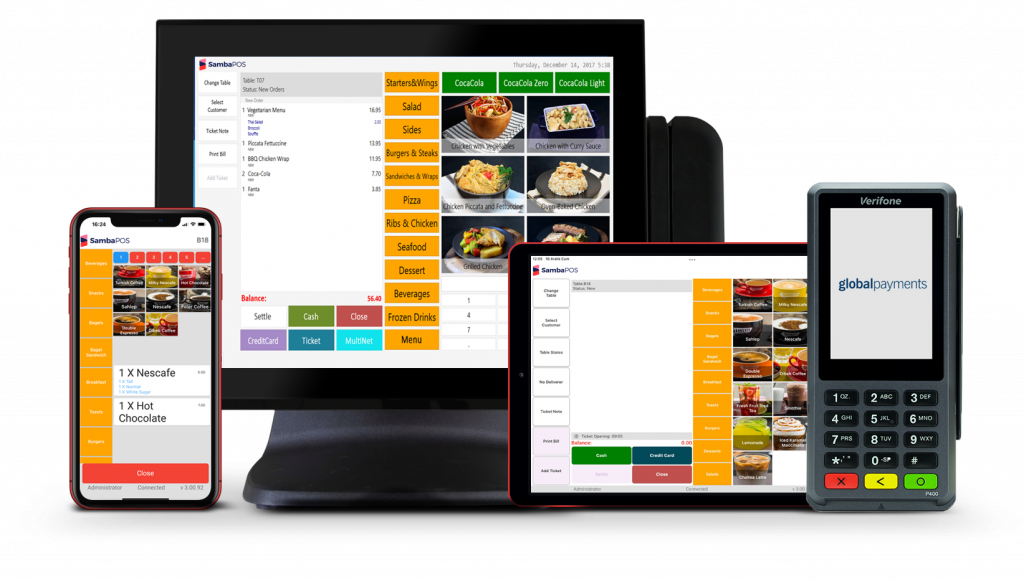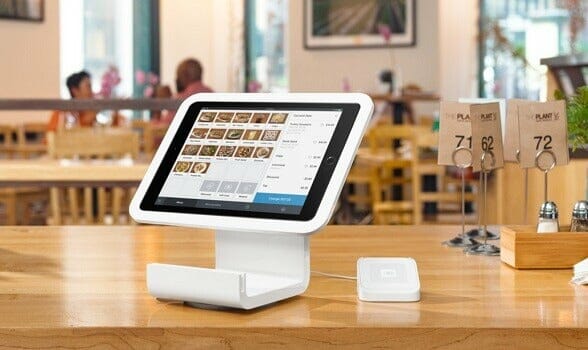How POS System Works: A Comprehensive Overview for Service Owners
A POS system serves as a necessary tool for contemporary services, integrating different components to enhance operations. It includes equipment like barcode scanners and software program available for sale tracking. This system not just processes transactions however also takes care of stock and examines consumer habits. Understanding its functionality can significantly influence a company's effectiveness and decision-making. What are the crucial elements that add to this performance? Discovering these components supplies useful understandings.
Recognizing the Components of a POS System
A Factor of Sale (POS) system is made up of numerous vital elements that function together to promote deals and manage company operations. At its core, the hardware consists of tools such as a sales register, barcode scanner, receipt printer, and settlement terminal, all essential for processing sales (Restaurant POS Software). The software element handles supply, sales monitoring, and client data, providing valuable insights for company decisions.Additionally, data sources save purchase records and customer details, ensuring data integrity and safety and security. Network connectivity makes it possible for real-time updates and access to cloud-based services, enhancing functional performance. Interface, made for simplicity of usage, enable personnel to browse the system quickly, decreasing training time. Together, these elements develop a cohesive system that improves the sales procedure, boosts customer care, and aids in effective management of company resources. Recognizing these components is vital for entrepreneur looking for to optimize their POS systems
Just How Sales Deals Are Processed
When a consumer chooses to buy, the sales purchase starts a collection of organized steps within the POS system. The cashier inputs the items being bought, which are scanned with a barcode reader or manually gone into. This activity retrieves item information, including rates and appropriate tax obligations, from the system's database.Next, the consumer is presented with the total amount due. The POS system after that processes the settlement, whether through cash money, bank card, or mobile payment methods. For digital payments, the POS firmly interacts with settlement cpus to accredit and confirm the transaction.Once the settlement is verified, the system creates an invoice, which can be published or sent electronically. This invoice works as receipt for the customer. Finally, the transaction data is tape-recorded in the system, guaranteeing exact sales documents and monetary tracking for the company.
Stock Monitoring and Monitoring
Effective stock administration and tracking are vital components of a POS system, as they ensure that companies keep perfect supply degrees and reduce discrepancies. A durable POS system enables real-time supply updates, reflecting sales and returns instantaneously. This enables entrepreneur to check supply degrees precisely, making certain that preferred redirected here things are easily available while avoiding overstocking of less preferred products.Additionally, progressed POS systems provide features such as automated supply informs and reorder tips, improving the procurement procedure. Barcoding and RFID modern technology improve accuracy in tracking supply motion, decreasing human error. Considerable coverage tools give understandings right into stock turnover prices, assisting businesses make educated decisions about acquiring and product offerings. Inevitably, effective stock monitoring with a POS system not just improves operational performance but also improves consumer fulfillment by ensuring product accessibility.

Evaluating Client Information and Insights
Customer information evaluation serves as a powerful tool for companies using a POS system. By gathering and checking out purchase information, services can reveal beneficial understandings concerning consumer actions and choices. This evaluation allows them to recognize acquiring fads, peak purchasing times, and preferred items, thereby informing inventory decisions and marketing strategies.Additionally, businesses can sector their consumer base, enabling individualized advertising and marketing initiatives that satisfy particular demographics or buying behaviors. Recognizing client loyalty patterns also helps in creating targeted promos and benefits programs.The data gleaned from a POS system can additionally disclose understandings into client comments, enabling organizations to make educated decisions pertaining to item offerings and solution renovations. Ultimately, leveraging client data properly can enhance the total purchasing experience, foster client contentment, and drive profits development.
Advantages of Carrying Out a POS System
Executing a POS system supplies countless benefits that can substantially enhance organization procedures. To begin with, it enhances transaction procedures, lowering wait times and boosting customer complete satisfaction. By automating sales processes, services can lessen human error and assurance precise record-keeping. In addition, a POS system supplies useful data analytics, allowing owners to track sales trends and inventory levels in real-time. This understanding sustains educated decision-making, helping to optimize stock administration and advertising and marketing strategies.Moreover, many POS systems integrate with other company you can find out more tools, such as accountancy software program, streamlining financial management. Enhanced employee management functions, such as tracking hours and performance, further add to visit this site right here operational efficiency.Lastly, the application of a POS system can bring about raised revenue through enhanced client experiences and calculated understandings, ultimately fostering organization development and sustainability.
Regularly Asked Inquiries
What Sorts Of Organizations Can Gain From a POS System?

How Much Does a POS System Normally Cost?
The cost of a POS system usually varies from a couple of hundred to numerous thousand bucks, depending on features, hardware, and software program - Restaurant POS Software. Businesses should think about recurring costs for upkeep, assistance, and purchase handling when budgeting

Can I Incorporate a POS System With Existing Software?
Integrating a POS system with existing software application is frequently viable. Several systems use APIs or built-in compatibility features, allowing companies to simplify operations and enhance capability by linking various software program applications successfully.
What Training Is Required for Team to Utilize a POS System?
Educating for staff to make use of a POS system normally includes understanding software program performances, processing purchases, managing supply, and handling customer communications - Restaurant POS Software. Practical demos and hands-on session boost effectiveness and self-confidence in operation the system successfully
What Occurs if the Web Goes Down While Using a POS System?
If the internet drops throughout POS system use, deals may be interrupted. Many systems offer offline capabilities, permitting standard procedures to continue, yet complete performance, including real-time inventory updates, will certainly be restricted.